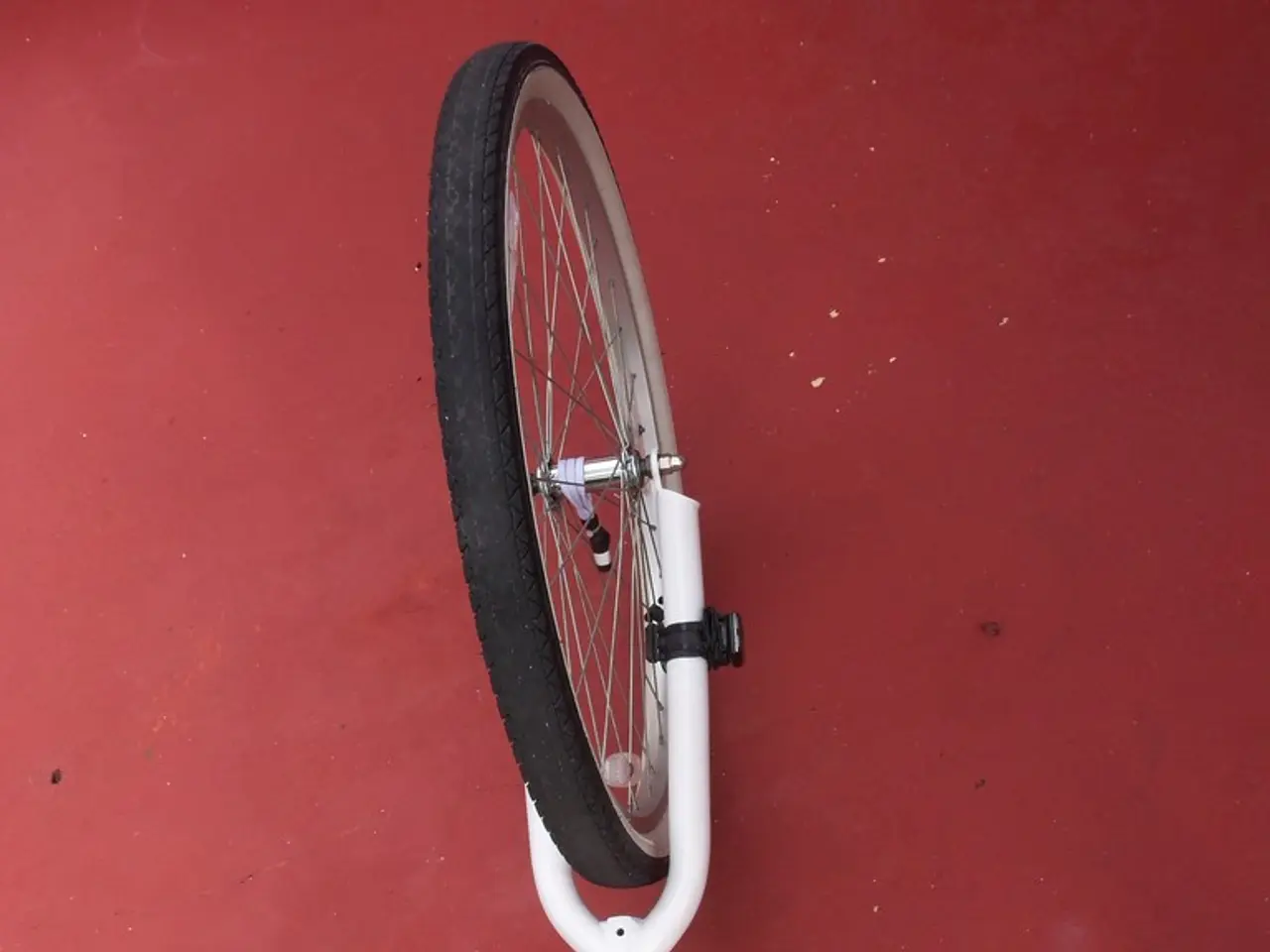Impact of steering force on substandard wheel designs acknowledged by Swiss Side, with assurance that their 68mm Hadron Ultimates offer superior safety compared to their shallower counterparts
The cycling world is abuzz with debate over the UCI's latest wheel depth rules for UCI road races. The new regulations, which limit wheel depth and size to slow down riders for safety reasons, have raised concerns about their impact on aerodynamic innovation and potential unintended consequences on rider safety and performance.
At the heart of the controversy is Swiss Side, a specialist in aerodynamic wheel development. The company is frustrated with the six-month notice period given by the UCI for the new regulations, as it has affected the launch of their new 68mm Hadron Ultimate 680 wheel.
Swiss Side believes the UCI should act responsibly, objectively, and inclusively in its decisions. Their research and in-house testing show that the Hadron Ultimate 680 wheels demonstrate that rim depth is not the primary factor in determining outright stability and safety. Decathlon-AG2R La Mondiale, a WorldTour team's wheel supplier, has also outlined in a letter that its Hadron wheels possess relatively low absolute steering moments compared to some 50-60mm wheel options currently used in UCI WorldTour events.
Despite the challenges, Swiss Side is adapting its future wheel designs primarily around the new UCI specifications rather than opposing the restrictions outright. They are focusing on optimising wheel profiles close to the 65mm max depth, developing mullet wheelsets (deeper rear wheels combined with shallower front wheels) to maximise aerodynamic benefits while adhering to UCI rules.
The new rules effectively cap rim depths around 65mm and total wheel plus tyre diameters. This move forces manufacturers to rethink wheel design strategies, influencing trends like the “mullet” road wheelset and posing aesthetic acceptance challenges within the road racing community.
Swiss Side has requested the UCI to reconsider the changes to the equipment regulations, particularly the rim depth limitation, and has asked for it to be delayed until at least 2027 or reworked completely. They argue that a new testing protocol standard for wheels and equipment should be considered by the UCI to ensure safety and fairness in the sport.
The development of a high-level road cycling wheel takes approximately 2.5 years and costs a six-figure sum. Swiss Side is committed to improving the safety of cycling, both for racing and for consumers. They have spent significant time and resources in R&D to create a wheelset they feel is safer in crosswinds than many of its rivals with shallower rim profiles.
The UCI's new restrictions have caused controversy in other areas too. The new handlebar width rules in road events have raised concerns due to potential ergonomic and injury risks for female competitors.
As the cycling season gears up, the debate over the UCI's new wheel depth rules continues, with many in the industry hoping for a reconsideration that balances safety, innovation, and fair competition.
- The controversy over the UCI's wheel depth rules in road racing has extended to the technology and manufacturing industry, with Swiss Side requesting a delay in the implementation of the rim depth limitation until 2027 or a complete rework to consider a new testing protocol standard.
- The new UCI regulations have forced manufacturers to rethink their wheel design strategies, prompting trends like the “mullet” road wheelset and posing aesthetic acceptance challenges within the road racing community.
- The finance industry is also impacted by these changes, as the development of a high-level road cycling wheel takes approximately 2.5 years and costs a six-figure sum, with Swiss Side committed to using these resources to create safer wheels for both racing and consumers.




